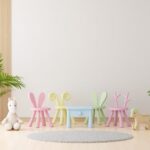Are you wondering how to decorate your home with plants? Adding greenery to your living space can bring a myriad of benefits, from purifying the air to boosting mental health and enhancing the aesthetic appeal of your home.
In this article, we will explore the many advantages of incorporating indoor plants into your interior decoration. We will also provide practical tips on choosing the right plants for your home, creative display ideas, DIY plant decor projects, plant care tips, and creating tranquil indoor gardens.
Adding plants to your home not only brings a touch of nature indoors but also offers numerous health benefits. From reducing stress and anxiety to improving air quality, indoor plants can transform any living space into a tranquil sanctuary. As we delve into the different aspects of decorating with plants, you’ll discover how these natural elements can enhance your overall well-being while adding visual interest to your interiors.
With careful consideration of lighting, space availability, and maintenance needs, you can select the perfect plants for each room in your home. Whether it’s a sunlit living room or a humid bathroom, there are suitable plant options for every corner of your house.
In addition to discussing the benefits of specific types of indoor flora in different rooms, we will also explore creative ways to display them using various techniques such as hanging, shelving, and repurposing containers. Join us as we embark on an exciting journey to infuse peace and serenity into your home through the artful use of indoor plants.
Choosing the Right Plants for Your Home
When it comes to choosing the right plants for your home, there are several important considerations to keep in mind. From lighting and space to maintenance requirements, selecting the perfect greenery for your space can make all the difference in creating a harmonious indoor environment. Here are some key factors to consider when picking out plants for your home:
Lighting
Before you start picking out plants, take note of the natural light conditions in your home. Some plants thrive in bright, direct sunlight, while others prefer low light or partial shade. Consider the orientation of your windows and the amount of sunlight each room receives throughout the day. This will help you determine which plants will do best in each specific area of your home.
Space
The size of your space will also dictate which plants are suitable for your home. If you have limited floor space, consider hanging plants or installing shelves to create a vertical garden. For larger rooms, consider statement plants such as fiddle leaf figs or large ferns that can bring a pop of greenery to the space without overwhelming it.
Maintenance
Consider how much time and effort you are willing to invest in plant care. Some plants require frequent watering and regular pruning, while others are more low-maintenance and can thrive with minimal attention. Be honest with yourself about how much effort you’re willing to put into plant care, and choose varieties that align with your lifestyle.
By taking these considerations into account, you can ensure that the plants you choose will not only enhance the aesthetic appeal of your home but also thrive in their new environment. So when considering how to decorate my home with plants, don’t forget to factor in lighting, space, and maintenance needs before making your selections.
Creative Plant Display Ideas
When considering how to decorate your home with plants, it’s essential to get creative with how you display them. One popular option is hanging plants, which can add a touch of greenery to any room without taking up valuable floor space. Consider using macrame hangers or wall-mounted planters to achieve this look. Another idea is to utilize shelving to showcase your plants, creating a mini indoor garden that not only looks beautiful but also helps save space.
Repurposing containers is another fun and eco-friendly way to display your plants. Get inventive by using items such as mason jars, teacups, or even old wine bottles as plant pots. Not only does this add an element of uniqueness to your home decor, but it also gives new life to items that would otherwise go to waste.
In addition to these ideas, consider incorporating a mix of different textures and materials in your plant displays. Combining hanging plants with wooden shelves and repurposed metal containers can create a visually interesting and dynamic look in your home.
| Idea | Description |
|---|---|
| Hanging Plants | Consider using macrame hangers or wall-mounted planters for added greenery without taking up floor space. |
| Shelving | Create a mini indoor garden by utilizing shelves to showcase your plants. |
| Repurposing Containers | Get creative by using mason jars, teacups, or old wine bottles as plant pots for a unique and eco-friendly display. |
Incorporating Plants Into Different Rooms
When considering how to decorate your home with plants, it’s important to think about where you want to incorporate greenery in your living space. Each room has different lighting and humidity levels, which can affect the types of plants that will thrive there.
In the living room, consider placing larger plants in corners or next to furniture to add a touch of elegance and vibrancy. Plants like snake plants, fiddle leaf figs, and rubber trees are popular choices for living rooms because they can tolerate low light conditions.
For the bedroom, opt for plants known for their calming properties, such as lavender or aloe vera. These plants not only improve air quality but can also contribute to a relaxing atmosphere ideal for achieving a good night’s sleep.
In the kitchen, consider herbs like basil, mint, and rosemary that not only add a fresh aroma but are also functional for cooking. You can place them in hanging planters near a sunny window or on open shelves for easy access while cooking.
Lastly, in the bathroom, look for plants that thrive in high humidity environments such as ferns and orchids. These plants not only bring life to the space but can also thrive in the moist conditions typically found in bathrooms.
| Room | Suggested Plants |
|---|---|
| Living Room | Snake Plant, Fiddle Leaf Fig Tree |
| Bedroom | Lavender, Aloe Vera |
| Kitchen | Basil, Mint, Rosemary |
| Bathroom | Ferns, Orchids |
DIY Plant Decor Projects
Creating DIY Terrariums
Terrariums are a great way to add a touch of greenery to your home in an easy and low-maintenance way. To create your own terrarium, you’ll need a clear glass container, small pebbles or rocks for drainage, activated charcoal to prevent mold and bacteria growth, potting soil, and of course, the plants of your choice. Succulents and air plants are popular choices for terrariums due to their ability to thrive in enclosed spaces with minimal care.
Crafting Unique Planters
Repurposing containers into planters is not only environmentally friendly but also adds a personal touch to your indoor plant display. Get creative by using old tin cans, mason jars, or even colorful ceramic pots as planters. You can even decorate them with paint, fabric, or decoupage for a personalized look that complements your home decor.
Designing Macrame Hangers
Macrame hangers are a stylish way to elevate the presence of your indoor plants while also saving space. With just some macrame cord and basic knotting techniques, you can create intricate hangers that add visual interest to any room. Whether you have trailing ivy or flowering plants, macrame hangers provide a unique way to showcase your green companions.
When considering how to decorate my home with plants through DIY projects such as terrariums, planters, and macrame hangers, remember that these creative endeavors not only add beauty to your space but also allow for the personalization of your indoor garden. Incorporating these projects into your interior design will help you connect with nature while adding uniqueness and charm to your living environment.
Plant Care Tips
One of the most important aspects of decorating your home with plants is ensuring that they are well taken care of. Proper plant care involves knowing when and how to water your plants, as well as when and how to prune them. Additionally, being able to recognize and troubleshoot common issues that may arise with your indoor plants is crucial for their overall health and longevity.
When it comes to watering your plants, it’s important to understand the specific needs of each plant. Some plants may require more frequent watering, while others may only need to be watered sparingly. Factors such as the type of soil, pot size, and environmental conditions also play a role in determining the watering needs of your plants. It’s essential to research and understand the requirements of each plant in order to maintain a healthy balance of moisture.
Pruning is another vital aspect of plant care that should not be overlooked. Regular pruning helps promote healthy growth, removes dead or damaged parts, and encourages new growth. Understanding the proper techniques for pruning different types of plants is key in maintaining their shape and overall appearance. By investing time in learning how to effectively prune your indoor plants, you can help them thrive and flourish.
Despite your best efforts in caring for your indoor plants, you may come across common issues such as yellowing leaves, pest infestations, or wilting foliage. Being able to identify these problems early on and take appropriate measures to address them is essential for the well-being of your plants. Whether it’s adjusting watering habits, using natural remedies for pests, or repotting if necessary, staying vigilant about any issues that arise can help keep your indoor garden thriving.
Incorporating these plant care tips into your home decor routine will ensure that your indoor plants not only enhance the aesthetic appeal of your living spaces but also thrive in their environment. By understanding how to properly water, prune, and troubleshoot common issues with your indoor plants, you can create a green oasis within your home that brings joy and tranquility.
Benefits of Indoor Plants
Indoor plants do not just serve as decorative elements for your home; they also offer various benefits that can improve the quality of your life. One of the major advantages of having indoor plants is their ability to purify the air in your home. Plants absorb carbon dioxide and release oxygen through the process of photosynthesis, which helps to freshen and cleanse the air inside your living spaces.
In addition to improving air quality, indoor plants have been shown to have positive effects on mental health. Studies have found that having greenery indoors can reduce stress, anxiety, and even depression. The presence of plants in your home can create a calming and relaxing environment, which can be particularly beneficial for individuals who lead busy or high-stress lifestyles.
Moreover, indoor plants contribute to the overall aesthetics of your living space. They add a touch of nature and vitality to any room, making it feel more inviting and lively.
From small succulents on shelves to large leafy green plants in corners, incorporating greenery into your interior design can enhance the visual appeal of your home. With proper care and placement, indoor plants can truly elevate the ambiance and style of each room, creating a sense of harmony between nature and modern living.
- Improve air quality by absorbing carbon dioxide and releasing oxygen
- Positive impact on mental health by reducing stress and anxiety
- Enhance the aesthetics of your home with natural greenery
Creating a Tranquil Indoor Garden
When it comes to creating a tranquil indoor garden, the possibilities are endless. Whether you have a spacious living room or a cozy bedroom, there are various ways to incorporate plants into your home decor to create serene and peaceful spaces. Here are some ideas on how to decorate your home with plants and foster a tranquil indoor garden:
1. Zen Spaces:
Create a calming oasis in your home by setting up a zen space filled with greenery. Consider adding low-maintenance plants such as snake plants, peace lilies, or bamboo palms to bring a sense of tranquility to the room. Arrange them in minimalist planters and add elements like pebbles, candles, or a small water fountain to enhance the zen atmosphere.
2. Green Nooks:
Transform any empty corner in your home into a green nook by arranging plants in varying heights and sizes. Use wall-mounted shelves or plant stands to display your greenery and create visual interest. Incorporate lush foliage plants like pothos, philodendrons, or ferns to add texture and depth to the space.
3. Nature-Inspired Dcor:
Bring the outdoors inside by decorating with nature-inspired dcor elements that complement your indoor garden. Consider using earthy tones, natural materials like wood and stone, and botanical prints in your furnishings and accessories. This will help create a cohesive look that seamlessly blends with your plant-filled surroundings.
By implementing these ideas, you can transform your home into a tranquil sanctuary filled with the beauty of nature. Embracing the beauty of indoor plants not only enhances the aesthetics of your space but also promotes an overall sense of calm and well-being within your home.
So if you’re wondering how to decorate your home with plants in order to create a peaceful retreat, consider incorporating these ideas into your interior design plans for a soothing and rejuvenating atmosphere.
Conclusion
In conclusion, decorating your home with plants offers a myriad of benefits for both your physical and mental well-being. From purifying the air to adding a touch of natural beauty to your living space, indoor plants have the power to transform any room into a tranquil oasis.
By carefully selecting the right plants based on lighting, space, and maintenance needs, you can create a personalized plant display that complements your home’s aesthetic while also boosting your mood and productivity.
Creative plant display ideas, such as hanging planters, shelving arrangements, and repurposed containers, offer endless opportunities to showcase your favorite greenery in unique and eye-catching ways throughout your home. Whether it’s incorporating plants into the living room to add color and vibrancy, bringing the calming influence of nature into the bedroom, or introducing herbs and succulents into the kitchen and bathroom for practical purposes, there are endless options for how to decorate your home with plants.
Furthermore, by embracing DIY plant decor projects like terrariums, planters, and macrame hangers, you can unleash your creativity and personalize your indoor garden even further. And with proper care tips for watering, pruning, and troubleshooting common issues, you can ensure that your indoor oasis continues to thrive.
Ultimately, by welcoming the beauty and serenity of indoor plants into your home through thoughtful selection and creative placement, you can create an environment that not only looks stunning but also promotes a sense of calmness and well-being.
Frequently Asked Questions
How Do You Beautify a House With Plants?
Beautifying a house with plants can be achieved by strategically placing them in various areas. Consider placing large leafy plants in empty corners, hanging trailing plants near windows, and incorporating small potted plants on shelves or tables. Plants can also be used as centerpieces on dining tables or side tables to add a touch of nature to the space.
How Do I Add Plants to My Home Decor?
To add plants to your home decor, start by selecting the right types of plants that complement your interior style and lighting conditions. Consider incorporating hanging planters, terrariums, or plant stands to create visual interest. Grouping different sizes and shapes of plants together can also create a stylish and cohesive look.
How Should I Arrange My Living Room With Plants?
When arranging your living room with plants, consider using them to create a focal point in the room. Place a large statement plant in a decorative pot as a centerpiece or next to furniture to draw attention.
Mixing different heights and types of plants can help balance the space visually, and using decorative baskets or plant stands can add texture and visual appeal to the room without overcrowding it.

I’m thrilled to be your companion on this exciting journey through the world of home decor and design. With a passion for turning houses into homes and a keen eye for the finer details, I’m here to help you transform your living spaces into beautiful, functional, and meaningful havens.





